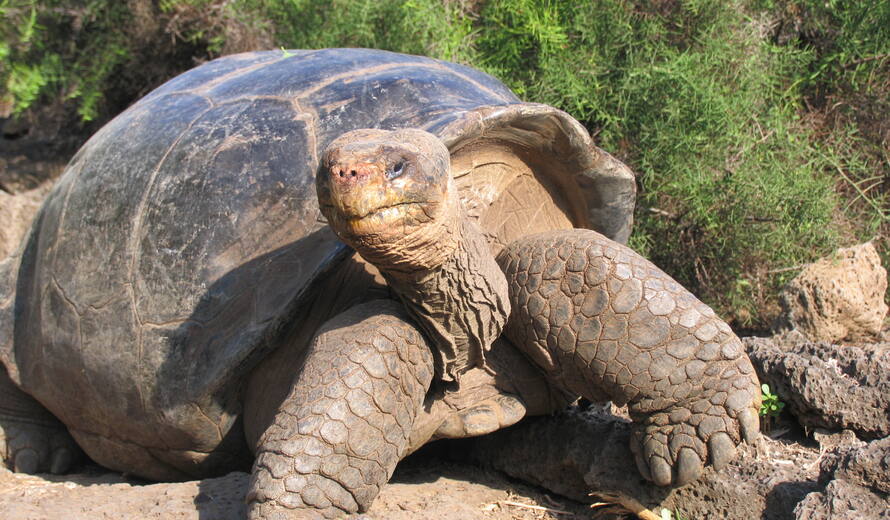Tsunami Spares Galapagos Wildlife, but Destroys Marine Laboratory
Minor damage has been reported at Galápagos Islands World Heritage site following the earthquake and tsunami that occurred off the coast of Japan on 11 March. The tsunami struck at high tide, and manifested itself as a series of marine surges, rising over 1.7 metres above the normal high water mark, flooding coastal buildings. Residents of Galapagos had been warned and had taken refuge in higher ground - no injuries were reported.
The Galapagos National Park Service (GNPS) immediately set out to evaluate the tsunami's impact on coastal visitor sites to ensure that the infrastructure to support the arrival and departure of passengers was in good condition. It reported that visitor sites near populated islands had not suffered major impacts by waves, and were thus kept open.
The GNPS visitor pier on Santa Cruz remains closed due to minor damage while the Giant Tortoise Breeding Center will not be open to visitation until visitors can be properly attended. Lonesome George, the iconic last Giant Tortoise from Pinta island, had been moved to high ground prior to the tsunami as a precautionary measure. In contrast, the Marine Biology laboratory at the Charles Darwin Research Station, located right on the waterfront, suffered serious flooding and is out of service until key equipment can be replaced. Those interested in supporting the re-equipping of the laboratory can donate to the Research Station directly by clicking here.
The GNPS also reports that the Southwest side of San Cristobal island is among the most affected. Infrastructure to facilitate visitation here has been significantly damaged. Marine iguanas are in full nesting season at this time of year, and it is likely that some mortality will have occurred due to the flooding and resulting erosion of coastal nesting sites, but not to a significant degree.
GNPS staff is conducting the cleanup of areas affected by the waves, both within the institution and along the coast near the towns.
Inscribed on the World Heritage List in 1978, the Galápagos Islands are situated in the Pacific Ocean some 1,000 km from the South American continent. Comprised of over 100 islands and islets and of a large marine reserve, the Galapagos has been called a unique 'living museum and showcase of evolution'. Located at the confluence of three ocean currents, the Galápagos are a 'melting pot' of marine species. Ongoing seismic and volcanic activity reflects the processes that formed the islands. These processes, together with the extreme isolation of the islands, led to the development of unusual animal life - such as the land iguana, the giant tortoise and the many types of finch - that inspired Charles Darwin's theory of evolution by natural selection following his visit in 1835.

